Ireland & Britain
England & Scotland
Travel Stories
Interests & Hobbies
Outdoors & Activities
Advice for Visitors
About My Ireland Tour
News & What's On

Offering perhaps less tourist infrastructure than the likes of Dublin and Belfast, this wild expanse of Ireland is one for those who like to get outdoors. When you travel to this rich and varied landscape, be sure to bring your walking boots and your camera. Many will be equally inclined to bring their golf shoes and sample the world-famous links courses on offer here. When you're ready to rest and recharge, the region's quaint towns and villages will offer plenty of distraction for anyone willing to look.
If you're visiting the northwest in search of 'must-see' Irish attractions, it is advisable that you have checked the other regions of Ireland off your list first. The main attractions here are all provided by mother nature so, on the plus side, there is no admission fee. Amazing mountains, beaches, cliffs and the idyllic towns and villages of Counties Donegal & Sligo all await visitors to the region. Below we have drawn up a list of our favourite attractions of the northwest.
Slieve League Cliffs are found on the South-West coast of County Donegal. Known to be one of the highest Sea-facing cliffs in Europe. Take in the stunning view, depending on the clarity of the day of course, of Donegal Bay and the Sligo Mountains.

A place of Christian pilgrimage for hundreds of years and a port for Monks journeying back and forth to Iceland, Slieve League is a wonder to behold.
There are no guard rails past the viewing platform, so be careful when visiting with small children. Also, the walkways along the cliffs are made of stone and are slick during rain. Study outdoor footwear is recommended.
Let Sligo invite you into its myriad of pedestrian streets with small, independent shops guiding you from one entertaining diversion to the next. As you travel further south toward County Clare, listen out for traditional music and dancing, as the Irish folk music nights ("trad sessions") and céilidhs invite you into traditional Irish pubs along the way.

Recovering after a Friday night session with the locals? Head for one of Sligo's Saturday-morning markets: Beltra Country Market, Benbulben Craft Village Farmers Market, Sligo Farmers Market and Sligo Flea Market all offer a great local atmosphere and, while you might not need to buy many groceries while you're here in Ireland, there will plenty of other little temptations to keep you entertained. When looking for relaxation and tranquillity on your Ireland vacation, the North West of Ireland is seen as a great choice.
Just 10 minutes north of Sligo on the N15, you will find Rathcormac Craft Village with its quaint Artisan Food and Craft Market. Worth a visit if you're looking for some authentic Irish crafts souvenirs.
Like Sligo, Donegal town makes an ideal base for its surrounding attractions and should be viewed as such, rather than as a thriving tourist destination in its own right. Visitors will find plenty of pleasant places to eat, drink and make merry, as well as lots of places to lay their weary heads in comfort. The town itself will provide curiosities and distractions for a daytime of discovery, but the region's most engaging attractions arguably lie outside the towns themselves.
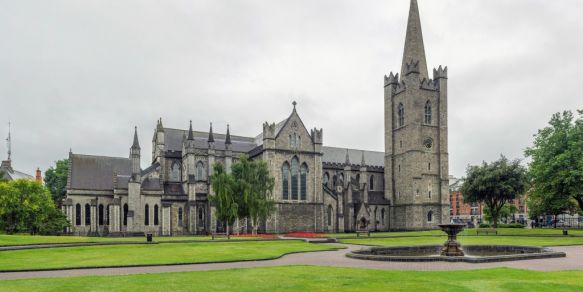
Historically, Donegal owes its prominence to its strategic location at the mouth of the Donegal bay, a fact borne out by the presence of the impressive and imposing Donegal Castle. Located on a curve of the River Eske, the castle was built in 1474 and would remain an enduring monument to the power of the O'Donnells until the downfall in 1607. When all was lost, leader Rory O'Donnell destroyed the castle himself before fleeing to France.
Restored in 1623 and again in the 1990s, the castle which visitors find today is in very good condition and, with guided tours every hour, it certainly merits a visit.
On a pleasant day, why not hop on the Waterbus and take a cruise around Donegal Bay? Look out for a white building with blue signage, just across the carpark from the tourist office.
This part of Ireland has some fantastic country routes, and self-drive visitors to Sligo and Donegal will not be short of photo opportunities along the way. One which is sure to please is The Glengesh Pass which runs from Ardara to Glencolumbcille. Passengers with a delicate stomach might want to take their travel sickness tablets before they embark on this narrow and tumbling sequence of tight hairpins, but if you keep your camera at hand you will have every excuse.
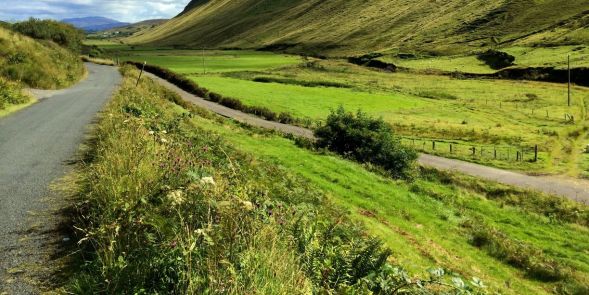
During the months of October through February, this area of the Northwest can be pitch black by as early as 5 pm. Roads can become icy in patches and snowstorms are not uncommon. If you are doing a self-drive tour, sticking to the summer months and traveling during daylight would be advisable.
This ascent will require more than just your walking boots: a knowledge of mountain safety and possibly a local guide might be called for, especially on days where the weather is anything less than bright and dry. At a fairly towering 752 metres, Errigal Mountain is a pleasant but challenging climb for any hobbyist hillwalker, and the main paths are not of the best quality. A hike on Errigal Mountain can really set your tour of Ireland apart.
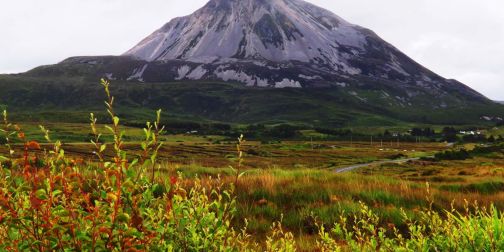
The start of the ascent will take you through a bog. The terrain here is very soft and can be slow and energy-sapping. A break after this initial section might be a good idea. In wet weather this 'slog through the bog' will become an even tougher challenge.
With less mileage on the Wild Atlantic Way and a more inland location, County Leitrim is perhaps overshadowed by the neighbouring counties of Sligo and Donegal. But visitors who pass by without exploring the glens, lakes and loughs for which Leitrim is famed will most certainly be missing out. Find out more about Leitrim tourist attractions by visiting www.leitrimtourism.com.
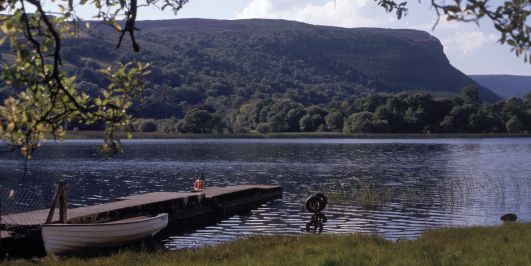
Nestled between the more popular destinations of counties of Donegal and Sligo, county Leitrim could be the more cost effective choice for accommodation during your Northwestern exploration.
If you have enjoyed the Glengesh Pass, then rest up and take the family on the kind of adventure that demands a barbecue and a bucket and spade. Although weather-dependent, this is an old-school family day out which won't cost much but is sure to please. (Drivers will have to pay €3 for parking. Don't go home without eating an ice-cream!)
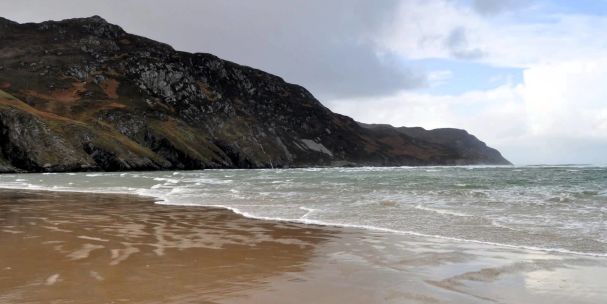
The beach itself looks like it belongs in a different hemisphere: stretches of soft white sand are gently ironed flat by an enticing turquoise sea. Please note, swimming in this area can be dangerous and is not advised.
The caves are no less beautiful than the beach itself, with multicoloured rock formations forming an artistic array of dizzying shapes. A very atmospheric space away from the more established tourist destinations.
While the beach looks tropical at times, the water seems to always be on the very chilly side. It's the ideal location for dogs and kids. Be sure to bring towels, even if you are not planning on swimming, as sand seems to blow continuously and can leave your car in need of a good vacuum cleaning.
Situated 50 minutes' drive from Donegal Town or 25 minutes from the fishing port of Killybegs, the Glencolmcille Folk Village (also known as Father McDyer's Folk Village Museum) is a thatched-roof replica of a traditional Irish rural village. Comprising a number of small cottages, called a "clachan", the village atop a hillside with a commanding sea view over Glen Bay Beach in the Gaeltacht (Irish-speaking area) of South West Donegal. A popular living-history museum, Glencolmcille was built and is maintained by the people of the local area.
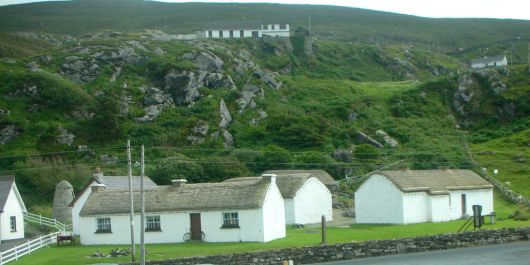
While the exhibition is fascinating, there is not always a human guide to show you through. There is a lot of text and graphical information that, without a guide, can demand your full concentration.
The Caves of Kesh are 16 caves, some of which are interconnected, found in the village of Keash, County Sligo. Remains of humans and animals dating back to as far as 10,000 B.C have been found in the caves during excavations in the 20th century. Amazingly, remains of reindeer were found on top of burnt charcoal, suggesting that the animal had survived in Ireland until the human period.
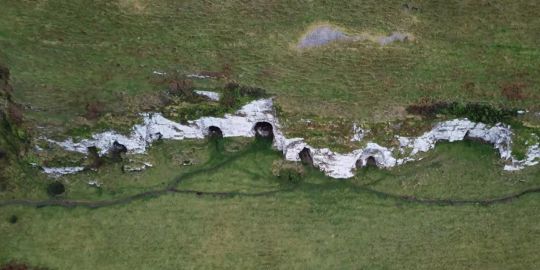
The climb up to the caves is fairly strenuous. A reasonable level of fitness and some sturdy shoes are recommended for this rewarding excursion.
The Glenevin Waterfall can be found as part of the Glenevein Valley walk in County Donegal. There are newly refurbished picnic areas dotted throughout the walk and there are footbridges and stepping stones in place to navigate the various streams running along the walk.
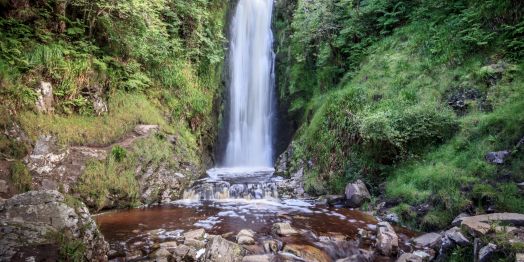
There are toilets on-site, as well as a café. The walk to the waterfall is a very gentle 1km, manageable for most walkers.

The Northwest is one of the most remote areas in Ireland. The safest way to travel into the region is to head for Donegal Town, Sligo Town or Westport in County Sligo as your first destination. Here you will be able to avail of the well-sign posted roads and get your bearings, before heading out to the more rural and coastal parts of the region. The following section will focus on getting in and out of the larger towns of the Northwest.
People visiting the Northwest of Ireland have usually started their journey in Dublin Airport. The drive to Donegal from Dublin Airport takes three hours along the N3. This is not a highway, it can take a little more navigation compared with the roads connecting Dublin to Ireland's other cities. If you are not used to driving in Ireland and this is your first time, it would be advisable to either drive to a different region first or break this drive into sections. If you are renting a car in Dublin Airport, it would be worth booking a Sat-Nav, as some of the roads in the northwest can be somewhat lacking in the signpost department.
The drive from Dublin Airport to Sligo takes two hours, via the M4 and N4. Expressway operates a non-stop coach service between Donegal and Dublin Airport. This coach takes 3 hours and 35 minutes. There is currently no train from Dublin to Donegal. The closest you can get is Galway City. This would involve getting a bus into Dublin City (Heuston Station) (route 747). From Hueston Station you would need to take a train to Galway and then a bus from Galway to Donegal.
The main bus terminal in Donegal is located outside the Donegal Abbey Hotel in Donegal Town. Sligo has a number of minor bus stations. It is possible to get a bus to the northwest from the different cities across Ireland but there may be a number of connections to make along the way. For more info on these routes, please visit Bus Eireann.
The main train station in the northwest of Ireland is the MacDiarmada Station in County Sligo (also known as Sligo Railway Station). This connects with Galway, Cork and Limerick to the South, Dublin to the East and Belfast to the North.
The best way to enter the northwest by car is to head for either Donegal Town or Westport in County Mayo. As a starting point, these will be the easiest to find, from there you can get more specific. The roads in Ireland's northwest are notoriously narrow and winding. While there are places to rent cars in Donegal and Sligo, most visitors tend to rely on public transport to get around.
Driving in the northwest, away from the larger towns, would only be advisable if you have experience driving on the left-hand side of the road and on narrow, unmarked roads. This is particularly true during the five months from October to February. Here the roads, especially the mountainous roads, can become impassable with ice and snow and, as there are often no street lights, certain areas can be pitch black by as early as 5pm.
The short answer is hmmm, kind of. Uber is available in Ireland but due to Irish laws that prohibit unlicensed, independent drivers, the service is offered more as a taxi booking app rather than the ride-sharing facility available in other countries. If you're used to the cost saving benefits of Uber versus taxis, unfortunately in Ireland the price for both works out the same — which can be on the expensive side, even for short trips.